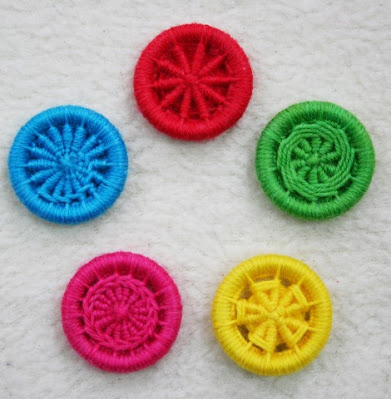Beginners Fingerless Mittens
Beginners Fingerless Mittens
www.beakerbutton.co.uk
©Jen Best 2022
These mittens are worked from side to side. The length is
approximately 22cm, but this will depend on your tension. To adjust the length,
change the cast on stitches or wet block them longer if they’re too short once
they’re made. Soak them in water for an hour then pin them to shape on a mat/ironing
board with rust free pins until dry. Once they’re dry they will retain
their pinned shape. You can then sew up the sides, leaving a hole for your thumb.
|
Yarn Weight |
Needle size |
Cast on Stitches |
Yarn amount |
2 colour stripes yarn
amount |
|
Lace |
2mm |
70 |
400m |
Yarn A 200m. Yarn B
200m |
|
4ply |
3.5mm |
50 |
200m |
Yarn A 100m. Yarn B
100m |
|
DK |
4mm |
40 |
140m |
Yarn A 70m. Yarn B
70m |
|
Aran |
4.5mm |
35 |
120m |
Yarn A 60m. Yarn B
60m |
|
Chunky |
6mm |
30 |
100m |
Yarn A 50m. Yarn B
50m |
|
Super chunky |
7mm. |
25 |
90m. |
Yarn A 45m. Yarn B 45m |
Stitch Patterns
Garter stitch - Knit every row
Stocking stitch - Knit one row, purl one row
Vertical 2 x 2 rib (when worked from the bottom up this is
horizontal rib) - Knit
one row. Purl 2 rows. Knit one row
These 4 rows make the pattern
2 colour stripes - Work in yarn A for 2 rows in what ever stitch pattern you prefer. Join in yarn B and work 2 rows in yarn B. Carry yarn A up the side, bringing the yarn in front of yarn B, being careful not to pull tight. Work 2 rows in yarn A. Carry yarn B up the side, bringing the yarn in front of yarn A, being careful not to pull tight. Work 2 rows of yarn B. Repeat the 2 rows of colour, always carrying the yarn you are going to work with up the side of the work, and keeping the tension even.
The stitch patterns above are easy to learn and suitable for beginners. You could substitute them for any stitch pattern you want to try. You may need to adjust the cast on for other stitch patterns. You are essentially making a rectangle of fabric which will wrap around your hand, and then sewing the sides together, leaving a hole for the thumb to poke through.
Make 2 mittens the same
Choose your yarn and your stitch pattern. Cast on the number
of stitches appropriate to your yarn on the chart above, making sure you leave
a long tail at the beginning of your work for sewing up later.
Work in your chosen stitch pattern until the piece wraps
nearly around your palm. Alternatively measure around your palm and work to 1cm
less than your palm measures. You are working to a negative ease of 1cm.
Negative ease means the fabric will stretch around your hand, rather than be
loose around your hand (positive ease).
Cast off in knit, leaving a long tail. Use the cast off tail to
sew the sides together, down to the thumb hole, and use the cast on tail to sew
up the side of the mitten to the thumb hole. I would use whip stitch to sew up
my sides. Weave in the tails and block if needed. The easiest way to find the best place for the thumb hole is to try the mitten on as you stitch. If you can’t try it on (you’re making a pair as a surprise for example) a good general rule is to make the thumb hole nearly half way down the side.




Comments
Post a Comment